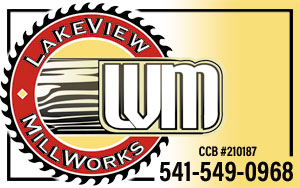Council authorizes UGB study
Last updated 5/23/2023 at 3:19pm
The Sisters City Council gave the green light to funding an analysis of the City’s urban growth boundary (UGB).
The Council approved a professional services agreement with Moore Iacofano Goltsman, Inc. (MIG) for an Urban Growth Boundary Sufficiency Analysis. Cost of the study is not to exceed $25,905.
Sisters is somewhat unique because the UGB is also the city limits. Most cities have a UGB that is different from its city limits. With increased development, and more people wanting to move to the area, the discussion of a potential expansion of the boundary has come up.
The Council and City staff did not discuss an expansion, but they did discuss hiring a contractor to conduct a sufficiency analysis study that will determine whether a boundary expansion is thought to be necessary. If so, the process to approve an expansion goes through many iterations from staff; it is brought to the planning commission, and the public would have a chance to weigh in before it went to the Council in public hearing.
Community Development Direct Scott Woodford offered information on what a sufficiency analysis is: “A UGB sufficiency analysis is a framework for evaluating the results of the housing needs analysis and economic opportunity examination in the context of the UGB.”
As one of the elements they must look at, the housing needs analysis examines population projections 20 years out, and how many housing units are necessary to accommodate the population projection.
Portland State University’s (PSU) Population Research Center is the primary source for Oregon to determine population numbers in cities around the state. PSU takes the population projections out 20 years and equates it to a certain number of housing units to accommodate the growth. Analysis projects how much land those units would take up within a UGB.
There is also an economic opportunity analysis that determines what types of industry and businesses the public needs/wants to have in the community, and then they analyze how much land is available for certain industries.
Woodford spoke to the goal of a UGB sufficiency report: “Its goal is to determine whether these analyses indicate the city currently has enough land within its UGB to meet the 20-year needs. It’s not a request to process an urban growth amendment. It’s an indicator of what they would be looking at in terms of land need.”
According to the project packet document: “Utilizing the results of the steps above, this analysis will help determine the sufficiency of land within the Sisters UGB to accommodate future residential, employment, and civic uses.”
The timeline of the study is six months. By then, the staff and development team will have a report on the sufficiency of the current UGB, and determine from there if expansion is called for.
City staff will create a project webpage with information that citizens will be able to access. The councilors were in favor of getting the information to make an informed decision on whether a UGB expansion will be necessary.
By charter, annexation of property into the city limits requires a vote of the citizenry, not just the City Council.
The timeline for a UGB expansion should one be recommended is 18-24 months.

















Reader Comments(0)